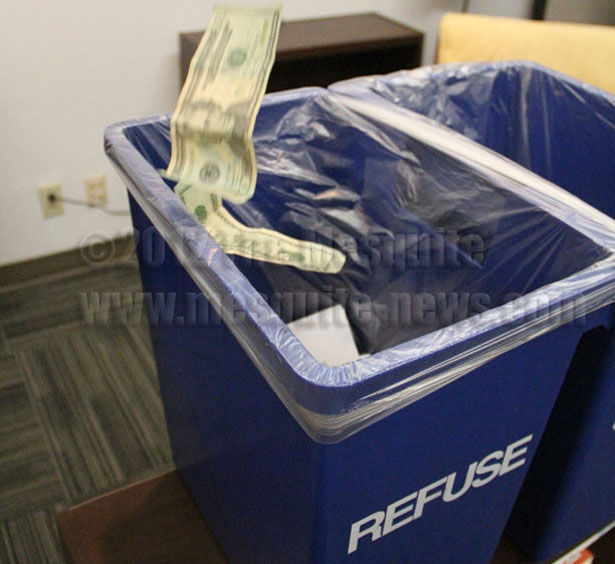
By Angelica Hartgers
Student loan debt is skyrocketing across the nation.
An August article in the Huffington Post reported that student debt is now higher than credit card debt, making it the second largest consumer debt in the country.
Guadalupe Valdez, financial aid compliance officer at Texas A&M-San Antonio, said the student debt crisis isn’t just a central issue for the university but is a national issue.
Seventy-three percent of students enrolled at this university receive some type of financial aid, Valdez said.
He suggests that students take advantage of credible websites to get information and stay informed — websites like studentloans.gov, where students can access repayment plan calculators, consolidation information and deferment alternatives, and the National Student Loan Data System, which offers tools that help students manage and track their loan history so they can be mindful of how much they have borrowed each semester.
While there is currently only a Stafford loan exit counseling session offered at the university, Valdez would like to expand campus resources in the future.
Debt crises examined
Media organizations and watchdog organizations following the trend are advising students and their families of practical advice on how to avoid predatory loan practices.
Student Debt Crisis, a non-profit advocacy group dedicated to reforming higher education funding, and The Project on Student Debt, a nonprofit research and policy organization dedicated to making college more available and affordable, are both watchdog organizations.
Student loan debt is on the rise for many reasons, researchers have shown. But high unemployment rate, educational cuts and the struggle for recent graduates to find jobs are just a few of the contributing agents.
Not all causes of the student debt can be attributed to the low economy. Researchers are tracking other instigators that are drawing students into debt, including loan sharks.
By making it easy for students to qualify for loans and providing readily available — as easy as a click of a button — students may be getting tricked into thinking that lenders are genuinely supportive of students’ financial plight. Getting educated is expensive. And for some lenders, that means a new market for exploitation.
If a nice chunk of money being readily lent from a large corporation seems too good to be true, it’s because it is. And students can’t afford to be fooled so easily.
Research is showing that loan sharks are capitalizing on the recession by taking advantage of students that need loans to pay for school. They do this by increasing loan rates and tacking on outrageous fees.
Loan procedures are shaped to make money for the internal gain of the corporation, meaning that for the loaners to make money, they must make it extremely hard for students to pay back their borrowed funds without avoiding capitalized interest and borrower default.
The Huffington Post reported that the nation’s largest student lender, Sallie Mae, is also one of the nation’s largest loan sharks. By continually lobbying against consumer protections and funding millions toward getting rid of Pell Grants, it is clear that Sallie Mae is vying to be the exclusive funding source for students by eliminating financial aid.
In an ongoing discussion on many campuses, students are trying to get smarter about their options and more cautious in protecting their wallets.
Some schools are not enforcing protective measures for students, leaving them prey to loan sharks.
An Oct. 16 article in ProPublica states that financial aid award letters are confusing and misinforming for students. Many combine grants, scholarships and loans, classifying all as “Award,” “Financial Assistance,” or “Offered Financial Aid.”
Some schools suggest loan amounts without any regard to a family’s income or financial stability. Without determining whether parents can actually afford the loans, it is likely that families can end up overburdened by debt.
With such predatory practices in place, it is no wonder that our country is sinking further into the student debt crisis.
But what about student responsibility? In a country where misinformation on loans and financial assistance is fed to students, it is the student’s duty to inform themselves before taking out or accepting student loans?
“A smart student,” Valdez said, “is one that does his own research before taking out any loans.”
In addition to the university’s financial aid office, off-campus resources like Cafe College, 131 El Paso St., are available to provide information for all students on avoiding financial aid scams. The organization offers assistance and workshops to help with filling out FAFSA forms and the aid process.





